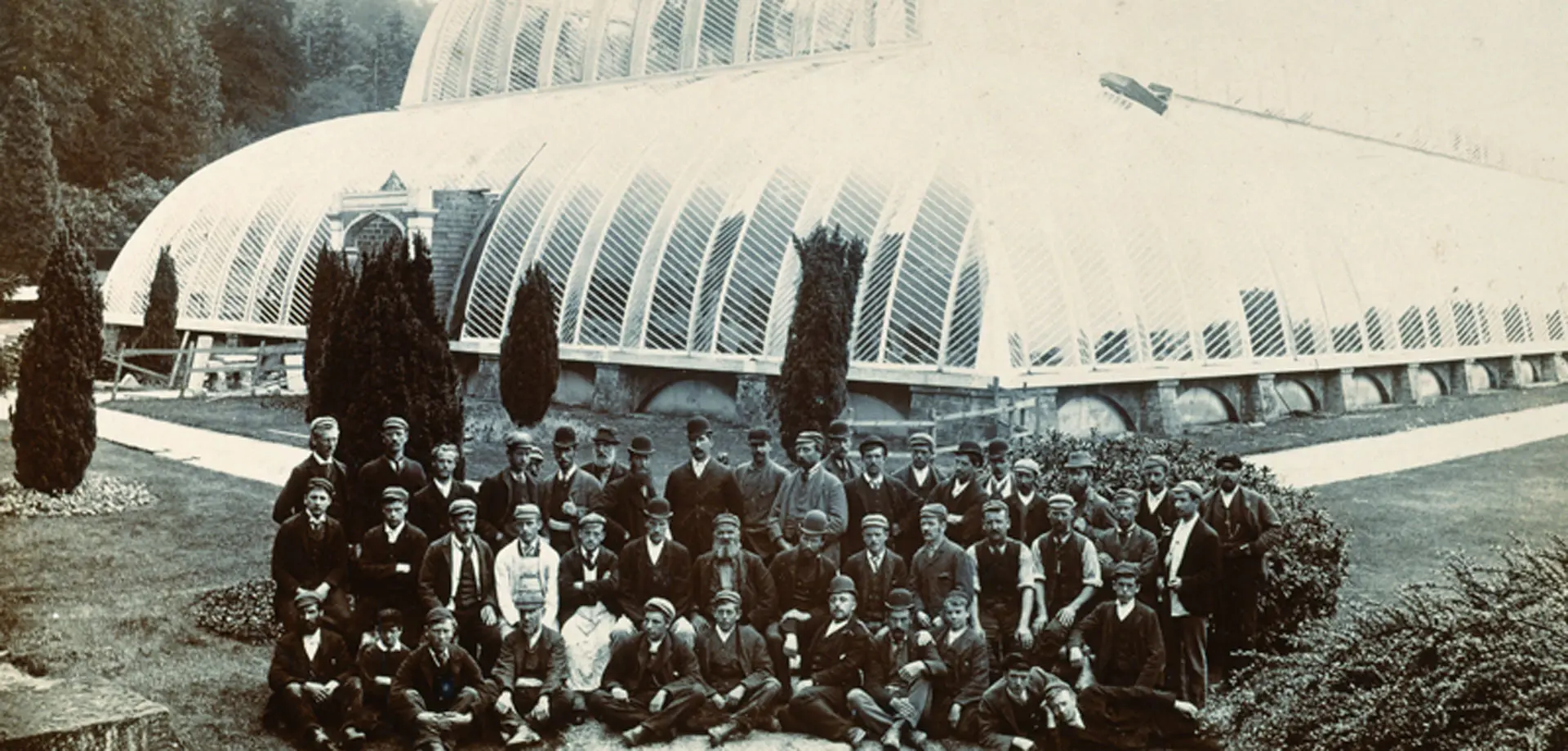The concept was vast. The building was 84m long, 37m wide and 19m high, the largest glass building in England before the erection of Paxton’s subsequent marvel, the Crystal Palace in London in 1851. Inside there was room for two carriages to pass on the main thoroughfare, and stairs, hidden by ascending rocks, led to a gallery from which you could inspect the highest branches of the exotic palms and other trees flourishing there. There were ponds full of aquatic plants, rocks, mosses, ferns and brilliantly coloured flowers in a tropical climate.
To create this climate there were eight underground boilers fuelled by coal which arrived by underground rail wagons. A short length of the tunnel is now open from the Coal Hole entrance. The boilers fed a seven-mile maze of 6-inch hot water pipes. In winter, it took 300 tons of coal to fuel the boilers. The boiler fumes escaped through flues laid along the ground to a chimney up in Stand Wood, well out of sight of the garden.
During and after the First World War (1914-18), there was not enough coal to heat the conservatory and many plants died. Because of the expense of restoring the now semi-derelict building and bearing in mind the huge cost of maintaining and heating it, the Great Conservatory was demolished in 1920, leaving only the supporting walls as a lasting memorial to this extraordinary building.
The Maze was established in 1962 within the walls of the former Great Conservatory by the 11th Duke.



